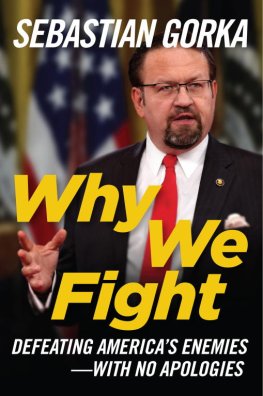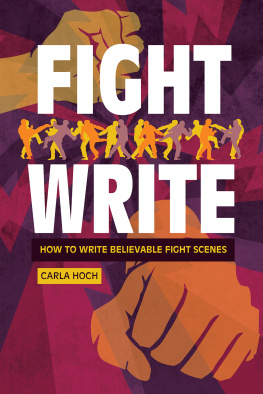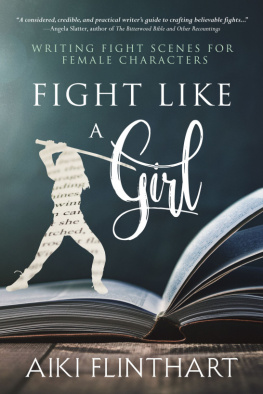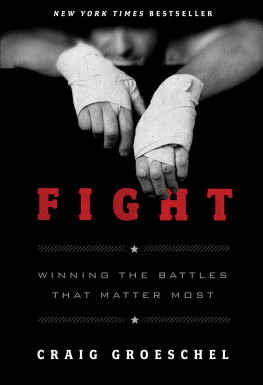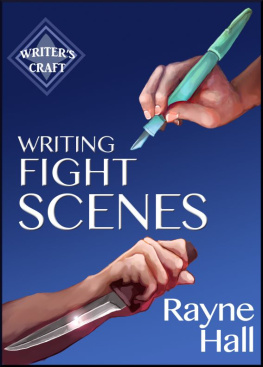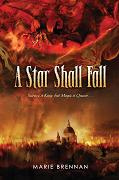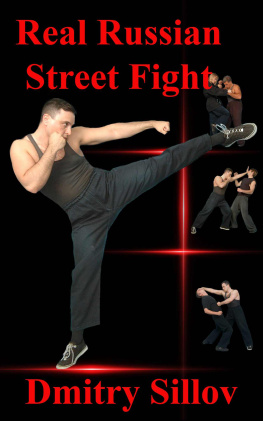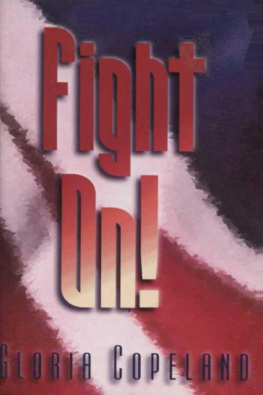FIGHT
WRITE
HOW TO WRITE BELIEVABLE FIGHT SCENES
CARLA HOCH

WritersDigest.com
Cincinnati, Ohio
DEDICATION
For my dear friend, Linda Kozar, who has fought for me in prayer and deed from the start.
TABLE OF CONTENTS
WHY, WHERE, WHO
BEING HUMAN
FIGHTING STYLES
WEAPONRY
.
INJURIES
PREFIGHT TALK
Hands tell a story. Their size tells a bit about the size of the rest of the body. The finger length often reflects the length of the limbs. The comparison in lengths of the index and ring finger tell our gender. The tone of the skin shows something of our genetic history. The amount of sun damage to the skin hints at the life we lived, what type of work or pleasure we chose. The color, condition, and pigmentation of the fingernails tell the state of our health. And, the absence of pigment in our palms separates us from all the other creatures with opposable thumbs.
There are twenty-seven bones, twenty-nine joints, and more than one hundred and twenty ligaments in the human hand. They are perfectly engineered for a multitude of tasks, not one of which is punching. Boxers know this, which is why they wear gloves. It might seem as though gloves are intended to protect the opponent but they arent. Gloves protect the hands of the fighter. Take off those gloves and you will find even more protection: yards of cloth, gauze, or tape encircling and binding the hands.
Every fighter who punches wraps his or her hands before the gloves go on. The wrapping pattern and material used can vary per sport and, as well, with each individual fighter. The purpose, however, is always the same: to pull together the bones of the hands. When drawn together and tightly bound, the bones of the hands are stronger. They act as a single unit rather than a bakers dozen of bones below the fingers. The impact of the punch is dispersed among all of them rather than absorbed by a few. If the hands are not wrapped correctly, bound together tightly enough, a fighter risks a fracture. Most likely that fracture will be in the bones below the little finger, more commonly known as a boxers break.
Writers and fighters arent so unlike each other. We each live by our hands. We use them to write our stories. A fighter uses their hands to write the story of their future. Writers write stories that may be about the future. Or, maybe the past. Or a plane of existence outside of time altogether. Like fighters hands, stories have to be tightly bound together. No part can be left loose or the whole suffers.
And, that, good FightWriter, is why this book exists. The fight scene in your work is important to the work or it wouldnt be there. It deserves all the authenticity of every other scene in your book, even if it is only a small part of the whole. Remember, the boxers break generally affects the smallest of the digits. But, it will compromise the entire hand and stop a fight all the same.
Be certain that your entire work is tightly bound. The sum of the parts should support the whole. And, the whole of your work, the sum of your words, should pack a punch.
Now, get ready. The bell is ringing, the First Round is starting. Its time to get blood on your pages.
ROUND ONE
Why, Where, Who
1
WHY
There are three things a fight writer should consider before writing any fight scene. Why, where, and who, in that order. Did you think it was going to be something flashier? Yeah, I get that a lot. But, fight writing, just like fighting, actually comes down to just a few basic things. Once you master those, everything else will come naturally.
The order of the three is important. Quite often we construct a brawl by first choosing the combatants and, without question, they are important. Without them, there is no story, no scene, and certainly no fight.
But, a character alone does not make a fight scene. Who a character is and the fact that they are fighting are not as important as why they are fighting. The why changes the fight. Here is what I mean. Put yourself in the following scenarios:
SCENARIO ONE
- You are at a company picnic. If you win the fifty-yard dash you get a free travel mug, complete with company logo.
- You are at a company picnic. If you win the fifty-yard dash you get $5 million.
SCENARIO TWO
- You are at the grocery store. Its quiet; there are few customers. Suddenly, someone runs by and steals one of the ten bottles of water you have in your cart.
- You are at the grocery store. Its quiet except for the muffled din of zombies trapped in the stockroom. Suddenly, someone runs by and steals the only bottle of water left in the store from your cart.
SCENARIO THREE
- You are walking through a parking lot with your toddler on your hip. A small, elderly man approaches and asks if you can help him find his car.
- You are walking through a parking lot with your toddler on your hip. A large, young man wearing sunglasses and a ball cap, holding one hand behind his back, approaches and asks if you can help him find his car.
In each set of scenarios, your response to the first situation was different from the second. I wont even say likely different because I know they were. Why? Because even though at their core each scenario was the same, even though you, the main character, remained the same, the stakes didnt. Why you were fighting changed and that why changed you.
The whys surrounding a fight are the most important considerations in crafting a fight scene. They make the reader aware of whats at stakehow much there is to lose or gainwhich determines and explains the intensity. The whys can also affect the speed and style of the combat. But, wait, theres more! The whys can even impart advantage and negate a disparity of size and skill.
INTENSITY
Look back at the scenarios. Your intensity in the second example was greater than in the first because the stakes were greater. In the first scenario, if you won the race you could be financially set for life. In the second, you were chasing a thief to retrieve something essential to life. In the last, you were facing a possibly dangerous stranger and considering the life of your child.
SPEED
Your speed was also affected. In scenario one you ran like the Road Runner. In two, you made chase like Wile E. Coyote. In the third scenario, you may not have moved at all.
ADVANTAGE/DISADVANTAGE
Its sometimes difficult to see how a why can impart advantage and negate a size and/or skill disparity. I think that is because a combatants lofty motivations, desperate desires, or pure old hunger to survive dont always secure a victory. When a fighters reason for fighting doesnt leave them the winner, some might assume their reason for being in the fray didnt have an effect. After all, if the fighter had wanted to win bad enough, wanted it more than their opponent, losing wouldnt have been an option. Right?
Wrong. Losing is always an option. Because although ones reason for fighting may give them the advantage of being willing to do whatever it takes to win, having an advantage is not the same as having the advantage. And leveling the playing field doesnt necessarily create a favorable gradient. In all cases, changing the why absolutely can make the underdog the top dog. But, not necessarily. The only absolute in fighting is that there are no absolutes.
In the first scenario you may have an advantage if you are the only one who knows about the money. But, if you are up against an Olympic athlete, how much you want to win will not close the gap between the differing abilities


